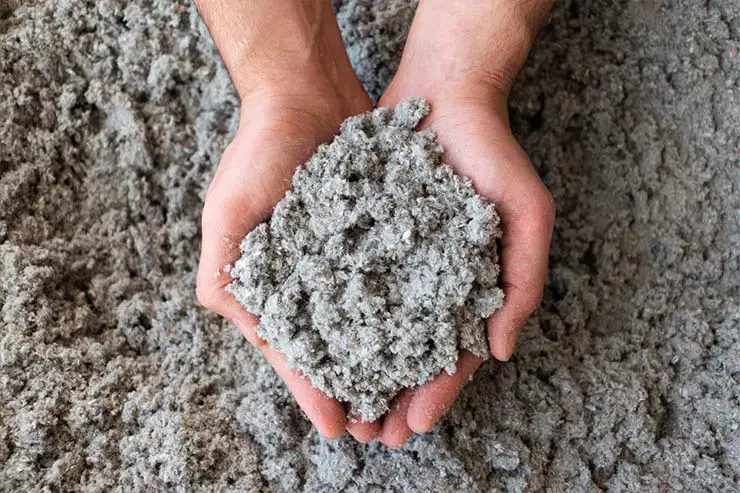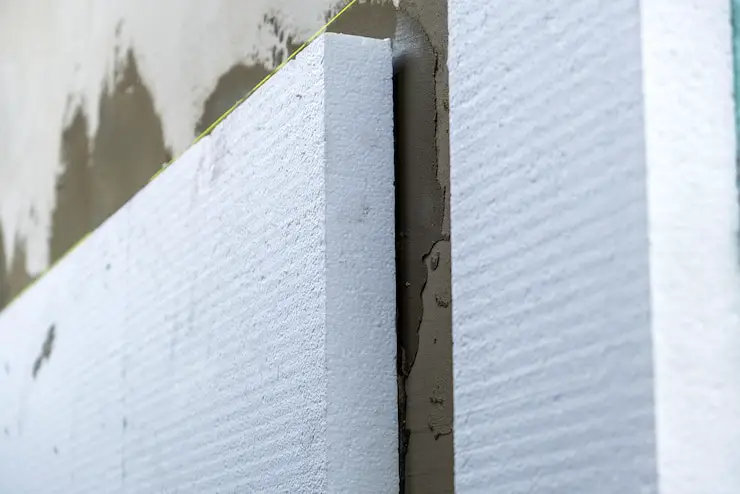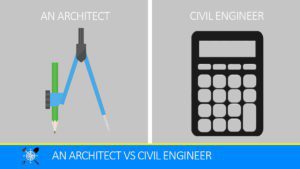Constructing a building with effective thermal insulation materials has become a priority for people wishing to cut down the bill for heating. Using thermal insulation materials in the building would help in reducing the cost of recurring expenditure for heating your home. Thus, in this article, we have searched and compiled 10 effective thermal insulation materials for your home.
What is the Thermal Insulation of a Building?
To start with, gaining an understanding of thermal insulation within a building is crucial. As we’re aware, heat is transmitted from hotter objects to colder objects, thus leading to loss of heat. This fundamental principle of thermodynamics explains the movement of heat energy from one object to another. Heat naturally moves from a region of higher temperature to a lower one, until both objects attain thermal equilibrium and their temperatures equalize.
A house constructed in a colder region requires good thermal insulation in order to encompass the loss of heat to the surrounding environment. This is achieved by providing good insulation to the building or using effective thermal insulation materials for buildings.
Thermal insulation is typically measured by a property known as thermal resistance, which is expressed in units of R-value (for the Imperial system) or m²·K/W (for the metric system).
The thermal insulation property is related to the thermal resistivity (ρ) of the materials. The thermal resistivity is constant for the material throughout its lifetime unless the material is affected by external factors. The R-value, which stands for thermal resistance, is a measure of how well a material can resist heat flow, and it is directly proportional to the material’s thickness and thermal resistivity. Therefore, the higher the R-value of a material, the better its thermal insulation properties, as it indicates greater resistance to heat flow.
R=ρL
Where,
R is thermal resistance
ρ is thermal resistivity
L is the thickness of the material
What is Thermal Insulation Materials?
Thermal insulation materials are those materials, which are designed to slow down the rate of flow of heat from one surface to another surface. They are designed to work by slowing down or resisting the flow of heat through the material, thus preventing heat from escaping or entering a building and structure.
Thermal insulation materials can be made from a wide range of natural and synthetic materials, including fibreglass, mineral wool, cellulose, foam plastics, and aerogel. They can take the form of batts, rolls, loose-fill, rigid boards, spray foam, or reflective barriers.
10- Effective Thermal Insulation Materials
There are various materials that can be used for effective thermal insulation in buildings. Here we have categorised it into three categories as Fibrous insulation, Foam insulation and Granular insulation as done by Mehta (2011).
Fibrous Insulation:
The effectiveness of fibrous insulation materials in resisting heat transfer is due to the air trapped between the fibres. These fibres can be made from minerals or cellulose. Fibrous insulation can be categorized into three types: (a) fibreglass, (b) mineral wool, and (c) Cellulosic fibres are another type of fibrous insulation material for building construction.
a. Fibreglass:
Fibreglass insulation is a type of thermal insulation material made from fine glass fibres that are spun or blown into thin strands or batts. These strands are then woven or pressed together to create a mat or blanket that can be installed in walls, ceilings, and floors to reduce heat loss and gain.
It has gained popularity for use in residential and commercial buildings due to its high R-value and low cost. The R-value of fibreglass insulation typically ranges from R-2.2 to R-4.3 per inch of thickness, depending on the density and type of insulation.
Fibreglass insulation is available in a variety of forms, including batts, blown-in loose-fill insulation, and rigid panels. It can be easily installed in new construction or added to existing walls or attics to improve energy efficiency and comfort.

b. Mineral wool:
Mineral wool insulation is a type of insulation material made from natural or synthetic mineral fibres, such as rock wool or slag wool. These fibres are produced by melting and then spinning or blowing a combination of minerals, such as basalt, limestone, or slag, into thin strands or fibres.
Mineral wool insulation is valued for its excellent thermal insulation properties (high R-value) and fire resistance, making it a popular choice for insulation in commercial and industrial buildings. On average, mineral wool insulation has an R-value ranging from R-3.0 to R-4.2 per inch of thickness.
There are several advantages of mineral wool which include, its resistance to moisture and not support the growth of mould or mildew. Also, it has the ability to withstand high temperatures, making it a suitable choice for insulation in high-heat applications such as ovens, kilns, and furnaces. The other benefit of mineral insulation is that, it acts as good acoustic insulation to reduce sound transmission between rooms or through walls.

c. Cellulose:
Cellulose insulation is a good thermal insulation material made from recycled paper, cardboard, wood, and sugarcane treated with fire-retardant chemicals and other chemicals to increase their resistance to fire, moisture and pests. It is an eco-friendly option that provides excellent insulation. It has the property of minimizing smoke contribution, fungal growth, and decomposition by moisture. Cellulose has an R-value of R-3.1 to R-3.8 per inch of material.
Cellulose insulation is also considered an environmentally friendly insulation option, as it is made from recycled materials and has a lower embodied energy compared to other insulation types. It can be easily installed in new construction or added to existing walls or attics to improve energy efficiency and comfort. It can be installed in walls, ceilings, and floors to reduce heat loss and gain, as well as to improve indoor air quality by reducing drafts and air infiltration.

Formed Insulation:
The most commonly used thermal insulating foams are synthetic (plastic) foams, such as extruded polystyrene and polyisocyanurate. Both are used as rigid boards, and their physical structure is cellular with closed cell cavities. The cavities contain HCFC (Hydrochlorofluorocarbon) gas.
a. Spray foam:
Spray foam insulation is a type of insulation material that is applied as a liquid, which then expands and hardens into a solid foam. It is typically used in building construction to provide thermal insulation and air sealing for walls, roofs, attics, and other areas. It also helps to seal gaps and cracks in walls.
Spray foam insulation is made by combining two chemicals – polyol resin and an isocyanate – which are mixed together in a spray gun or machine. When the mixture is sprayed onto a surface, it expands and hardens into a solid foam, creating an airtight seal that helps to prevent heat loss and gain.
There are two main types of spray foam insulation: open-cell and closed-cell. Open-cell spray foam insulation is a lighter and less dense material that is often used for interior walls and ceilings. Closed-cell spray foam insulation is denser and stronger and is commonly used for exterior walls, roofs, and other areas where a high level of insulation and moisture resistance is required.
Closed-cell spray foam insulation typically has an R-value of around R-6.0 to R-7.0 per inch of thickness, while open-cell spray foam insulation has an R-value of around R-3.5 to R-4.0 per inch of thickness.
b. Polyurethane foam:
Polyurethane foam or PU foam is a type of synthetic polymer that is widely used as insulation material due to its excellent thermal insulation properties. The foam is created by blowing agents that generate gas bubbles in the liquid mixture, causing it to expand and solidify into a lightweight, cellular material. It is made by reacting diisocyanates (such as toluene diisocyanate or methylene diphenyl diisocyanate) with polyols (such as polyester or polyether polyols), which results in the formation of foam.
There are two main types of polyurethane foam: flexible and rigid. Flexible polyurethane foam is soft, cushiony and can be found in mattresses, furniture, and automotive seats. Rigid polyurethane foam is a hard, closed-cell foam that is used as insulation in buildings, refrigerators, and freezers. It is also used in the construction industry as a structural foam for lightweight panels and in the marine industry as a flotation foam for boats and buoys.
According to the U.S. Department of Energy, the R-value of closed-cell polyurethane foam insulation can range from R-6.5 to R-7.0 per inch of thickness, while open-cell polyurethane foam insulation typically has an R-value of around R-3.5 to R-4.0 per inch of thickness.

c. Polystyrene Insulation Foam:
Polystyrene insulation is a type of rigid foam insulation made from polystyrene, a synthetic polymer made from styrene monomers. It is typically available in two forms: expanded polystyrene (EPS) and extruded polystyrene (XPS).
Expanded polystyrene (EPS) is a lightweight, closed-cell insulation material that is made by heating and expanding polystyrene (beads) board. It is commonly used in building construction as an insulation material for roofs, walls, and foundations. EPS is known for its excellent insulating properties, durability, and moisture resistance.
Extruded polystyrene (XPS) is a dense, closed-cell insulation material that is made by extruding polystyrene through a die to form a continuous sheet. It is used in a variety of applications, including roofing, walls, and foundation insulation. XPS boards are costlier than EPS boars and are known for their high compressive strength, resistance to moisture, and long-term thermal performance. During the 1940s, the Dow Chemical Company in the United States introduced a product called Styrofoam, which was the first extruded polystyrene (XEPS) insulation material to be manufactured
According to the U.S. Department of Energy, the R-value of expanded polystyrene (EPS) insulation ranges from R-3.6 to R-4.2 per inch of thickness, while extruded polystyrene (XPS) insulation has an R-value of about R-5 per inch of thickness.

d. Foamed Concrete:
Foamed concrete insulation, also known as cellular concrete, is a lightweight and highly insulating material that is made by mixing a cementitious paste or mortar with a foaming agent. The foaming agent creates small, uniform bubbles throughout the mixture, which gives the material its low density and high insulation properties.
Foamed concrete insulation is typically used as a thermal insulating layer in floors, roofs, and walls, as well as in other building applications. It can also be used as a fill material in construction and civil engineering projects, such as bridge abutments and road embankments.
The insulation value of foamed concrete depends on the density of the material, with lower-density foamed concrete providing higher insulation values. Typically, the R-value of foamed concrete insulation can range from around R-1.5 to R-2.5 per inch of thickness.
Granular insulation:
Granular insulation is a type of loose-fill insulation that consists of small, granular particles. These particles can be made from a variety of materials, including mineral wool, perlite, vermiculite, and cellulose. Three types of granules are in common use:
- Expanded perlite granules
- Expanded vermiculite granules
- Expanded polystyrene (EPS) granules
a. Expanded perlite granules
Expanded perlite granules are small, lightweight, and porous particles that are made by heating and expanding perlite ore. Perlite is a naturally occurring volcanic glass that is mined and processed to create perlite granules.
Expanded perlite granules are commonly used in various industrial applications, including insulation, horticulture, and filtration. In construction, they are used as a loose-fill insulation material in walls, floors, and roofs due to their low thermal conductivity and high resistance to fire, moisture, and vermin. Perlite insulation also has good sound absorption properties.
b. Expanded vermiculite granules
Expanded vermiculite granules are made from mica (Mehta. 2011). Expanded vermiculite granules are small, lightweight, and porous particles that are made by heating and expanding vermiculite ore. Vermiculite is a natural mineral that is mined and processed to create vermiculite granules.
Expanded vermiculite granules are commonly used in various industrial applications, including insulation, horticulture, and construction. In construction, they are used as a loose-fill insulation material in walls, floors, and roofs due to their low thermal conductivity and high resistance to fire, moisture, and vermin. Vermiculite insulation also has good sound absorption properties
Both Expanded perlite granules and Expanded vermiculite granules are used as loose-fill insulation in masonry cavities and their R-values degrade by absorbing moister.
c. Expanded polystyrene granules
Expanded polystyrene granules (or beads), which are commonly used as packing material, are not recommended as
loose-fill insulation in masonry because they are extremely lightweight and do not completely fill air spaces. Additionally, because polystyrene is a polymer, its granules are combustible, whereas perlite and vermiculite granules are non-combustible.
Conclusion:
The choice of thermal insulation material will depend on a variety of factors, including the specific application, environmental considerations, cost, and safety. It is important to consider the R-value, thermal conductivity, moisture resistance, fire resistance, durability, cost, and environmental impact of each material before making a decision. By selecting the best thermal insulation material for a specific application, building owners can enjoy increased energy efficiency, reduced heating and cooling costs, and a more comfortable indoor environment.
FAQs:
Q: What is the R-Value of the materials?
A: The R-value of a material is a measure of its thermal resistance or ability to resist the flow of heat. The R-value is expressed in units of m²·K/W (for the metric system) or ft²·°F·h/Btu (for the Imperial system).
The higher the R-value of a material, the more resistant it is to the flow of heat, and therefore the better its insulation properties.
Q: What are the properties to be considered before choosing effective thermal insulation materials?
A: The properties to be considered before choosing effective thermal insulation materials are:
1. R-Value of the materials
2. Thermal conductivity
3. Moisture resistance
4. Fire resistance
5. Cost and
6. Durability
References:
- Mehta, M., Scarborough, W., & Armpriest, D. (2017). Building constructions: Principles, materials, and systems. Pearson Education, Inc.
- International Code Council. (2021). International Building Code. Washington D.C.: International Code Council.
- Aluminobond.Top 10 thermal insulation building materials. https://aluminobond.com/top-10-thermal-insulation-building-materials/
- General principles of thermal insulation. (n.d.). Planet Insulation. Retrieved May 3, 2023, from https://www.planetinsulation.co.uk/
- The Constructor. Materials and Method of Thermal Insulations of Buildings. https://theconstructor.org/building/thermal-insulation-of-buildings-materials-methods/21404/
Also, read:
- What is Cellular Concrete?: Types, Application, Advantages, Disadvantages
- 10 Best Fire-Resistant Building Materials
![]()







